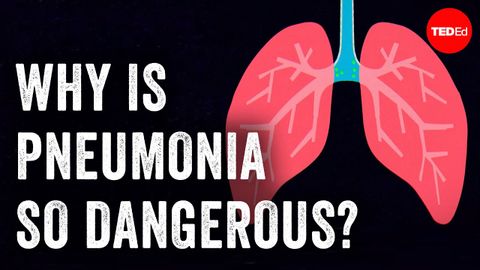為什麼肺炎如此危險?- Eve Gaus和Vanessa Ruiz (Why is pneumonia so dangerous? - Eve Gaus and Vanessa Ruiz)
 沒有此條件下的單字
沒有此條件下的單字US /ˈvʌlnərəbəl/
・
UK /ˈvʌlnərəbl/
- adj.脆弱的;易受攻擊的;易受傷的;脆弱的;易受影響的;需要特別照顧的;易受批評的;(橋牌中)易受攻的
US /ˈkruʃəl/
・
UK /'kru:ʃl/
US /səˈsɛptəbəl/
・
UK /səˈseptəbl/
- adj.易感;易受影響的;易得病的;易受影響的;脆弱的
US /ɪˈmjoon/
・
UK /ɪˈmju:n/
